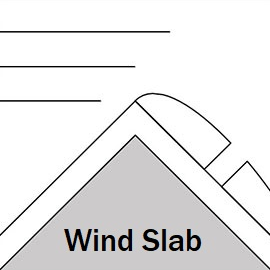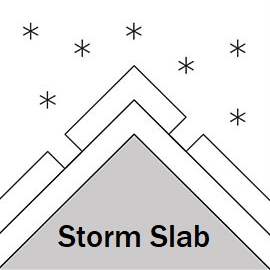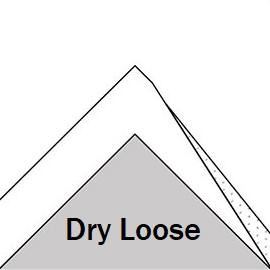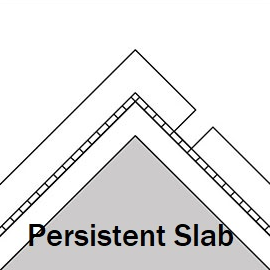Gudauri
Natural avalanches are possible, human-triggered avalanches are likely. Small avalanches in many areas, or large avalanches in specific areas, or very large avalanches in isolated areas.
Over 50 - 60 cm of new snow fell on Saturday 27 Jan, followed by winds from variable directions, creating a widespread storm snow (new snow) and a wind slab problem. This new snow does not bond well with some previous surfaces, and there could also be failures within the new snow due to the rapid loading and wind-effect. An avalanche could also trigger buried and stubborn wind slabs. Weak layers deeper in the snowpack exist in some places and investigation is recommended. Just today we got note of whumpfing heard. The skiing is likely really good in the coming days, but the new snow needs time to settle - until then, keep it low-angle, avoid avalanche paths and run-out zones and watch what (and who) is above you. Also keep in mind that in the higher elevation bands, the good skiing may also be where the wind slab is!
Forecast issued at: 29 January 2024 00:00
Forecast valid until: 30 January 2024 00:00
Forecaster: Peter S, Manu G.
High Alpine
> 2600m
3 Considerable
Dangerous avalanche conditions. Careful snowpack evaluation, cautious route-finding and conservative decision-making essential.
Alpine
2000m - 2600m
3 Considerable
Dangerous avalanche conditions. Careful snowpack evaluation, cautious route-finding and conservative decision-making essential.
Sub Alpine
< 2000m
2 Moderate
Heightened avalanche conditions on specific terrain features. Evaluate snow and terrain carefully; identify features of concern.
Avalanche Problems
Wind Slab

Fresh wind slabs formed from recent NW, W and SW winds. The exact direction of the winds is uncertain, so watch for signs of wind slab beyond the indicated aspect. Also be mindful of potential cross-loading. The wind slab may be very soft, making it difficult to detect.
| Sensitivity | The specific avalanche problem type is reactive to human rider triggers. Easy to trigger with ski cut. |
| Distribution | Many locations. Evidence for instabilities is frequently found, in many locations. |
| Time of Day | All day |
| Trend | Improving |
| Confidence | Moderate |
Storm Slab

Over 50 -60 cm of new snow accumulated in the alpine and subalpine on Saturday, 27 January, and there will likely be more new snow in many areas of the high alpine. This new snow is likely to form skier-triggered avalanches in places where the new snow layer is more cohesive. The new snow does not bond well with the previous snow surface where it was hard, crust, or wind-scoured. With relatively low temperatures, this new snow layer will take at least another 24 hours to settle.
| Sensitivity | The specific avalanche problem type is reactive to human rider triggers. Easy to trigger with ski cut. |
| Distribution | Specific areas, with common characteristics. Evidence for instabilities exists, but it is not obvious and finding it requires careful observations. |
| Time of Day | All day |
| Trend | Improving |
| Confidence | Low |
Loose Dry

Unconsolidated new snow can cause natural dry loose snow avalanches on steep slopes but can also be triggered by skiers on lower-angle terrain.
| Sensitivity | The specific avalanche problem type is reactive to human rider triggers. Easy to trigger with ski cut. |
| Distribution | Many locations. Evidence for instabilities is frequently found, in many locations. |
| Time of Day | All day |
| Trend | Improving |
| Confidence | Moderate |
Persistent Slab

Weak layers associated with melt-freeze crusts or density changes have been found in a couple of spots around the forecast area, and cold temperatures are likely to be making these layers weaker. These weaknesses probably need a large load to set them off, but with new snow adding weight, watch this space! Probably only found in isolated areas, although there is still uncertainty - we need more information, so please let us know what you find out there.
| Sensitivity | The specific avalanche problem type is difficult to trigger with a human rider. |
| Distribution | A few, isolated locations; evidence for instabilities is rare and hard to find. |
| Time of Day | All day |
| Trend | No change |
| Confidence | Moderate |
Recent Avalanches and Snowpack
Recent avalanche activity:
25th January - natural size 1 windslab observed, S aspect 3000m (happened on 24th)
24th January - 2 x skier-triggered size 1windslabs, SW and W aspects, Bidara W, 2700m. Size 1 loose dry slides observed, steep high alpine areas.
Snowpack:
Significant amounts of new snow fell on Saturday 27 January. This new snow is wind-effected in many places and will be unstable for at least 24 - 48 hours after the end of the storm. The deeper snowpack is generally stable, especially lower elevations (under 2000 m) due to several melt-freeze cycles. Recent warm temperatures formed a crust below 2600 m - 3000 m, depending on aspect. This crust may start to facet in the current cold temperature and coming clear nights. In some areas higher up (above 2600 m), weak, faceted snow was found in shallow rocky areas near ridges, and a crust/facet layer was also seen around 3000 m, E aspect. With colder temperatures, these layers will need to be watched carefully. Some uncertainty remains about surface hoar under the recent snow, which may have survived in sheltered areas above 2500 m. However, we have not yet seen evidence that this is a problem. Check out recent snow profiles (or add your own!) at snowpilot.org
Weather
Clearing but cold, with lows around -17° and maxima around -9° Winds light to moderate N.
Disclaimer
Our avalanche forecasters are internationally qualified and experienced professionals, and data is provided by skilled observers. We encourage you to make your own observations and decisions, without relying solely on our forecast, since any forecast is a generalised 'best guess', and in certain cases it might be inaccurate. We can not be held liable for any actions you take in the backcountry that may result in injury, loss or death.